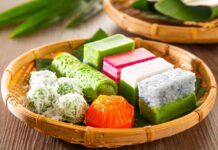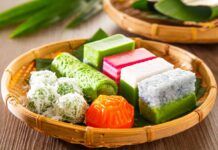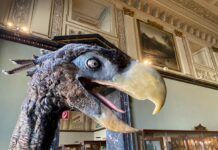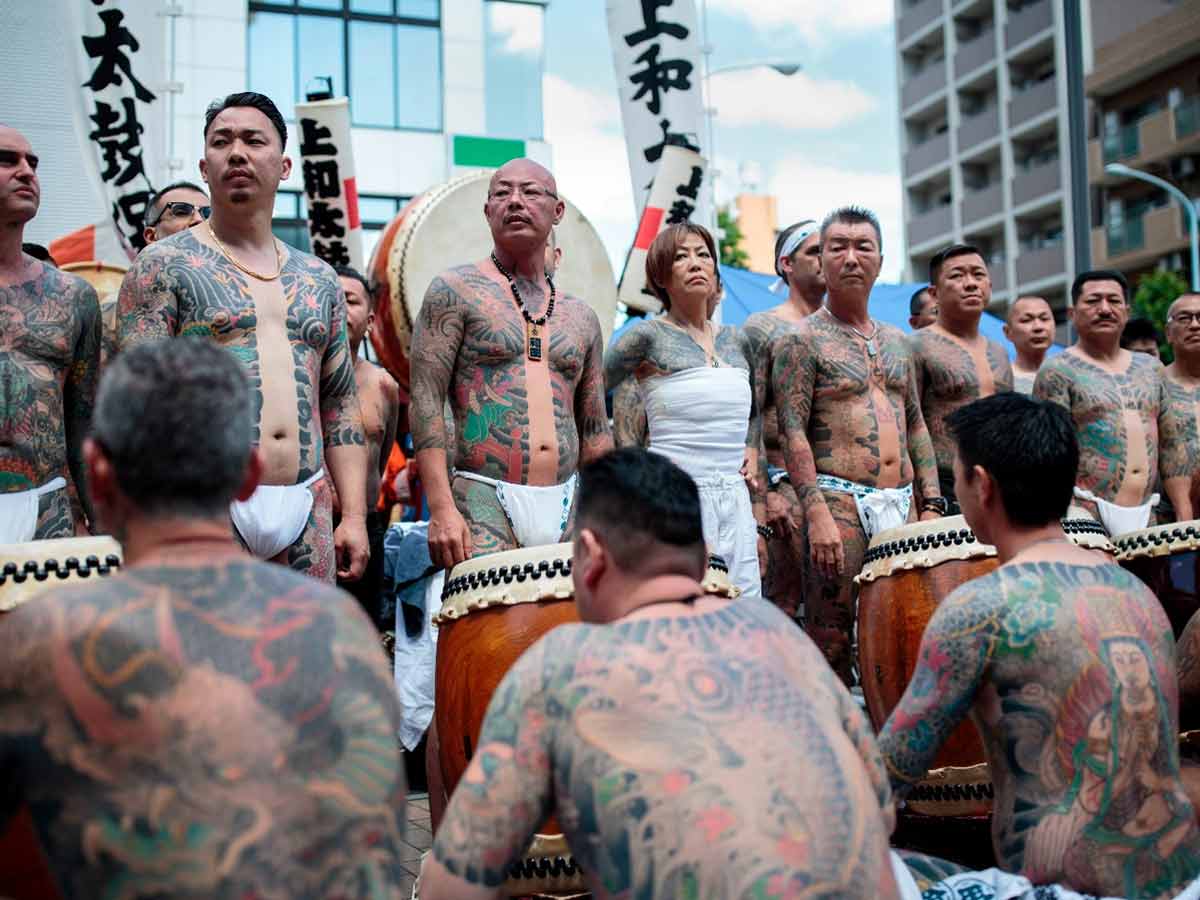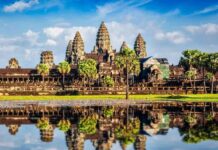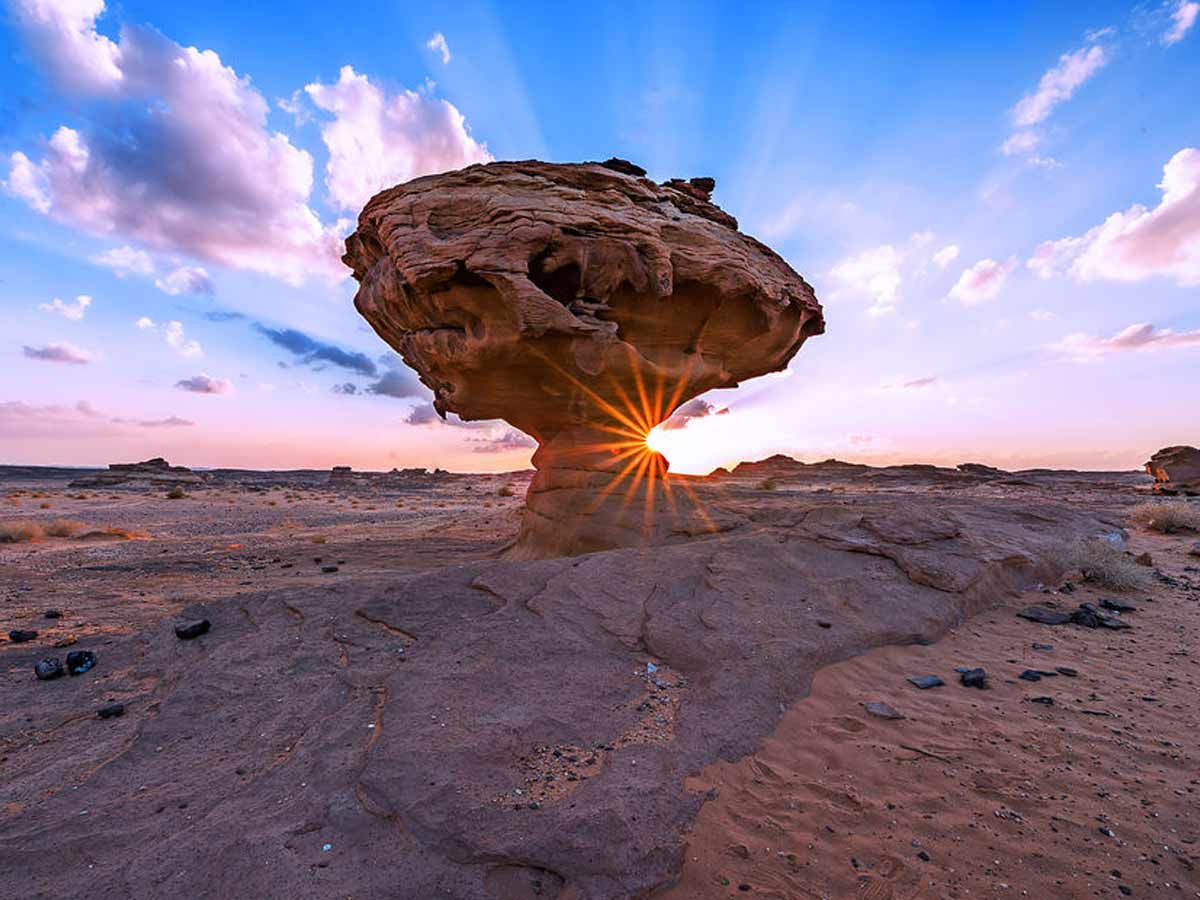Yakuza, also known as bryokudan or gokud, are Japanese gangsters who are members of Bryokudan (“violence groups”) or Mafia-like criminal organizations. Individual gangsters or criminals and their structured organizations and Japanese organized crime, in general, can be referred to as Yakuza in Japan and internationally, particularly in the West. Yakuza practice samurai-style rites and frequently have intricate body tattoos.
Extortion, blackmail, smuggling, prostitution, drug trafficking, gambling, loan sharking, day-labor contracting, and other rackets are practiced. They own or control many restaurants, bars, trucking companies, talent agencies, taxi fleets, factories, and other businesses in major Japanese cities. They are also involved in criminal operations all around the world.
The term yakuza, which means “good for nothing,” is thought to have sprung from a useless hand in a Japanese card game akin to baccarat or blackjack: the cards Ya-Ku-Sa (“eight-nine-three”), when added together, provide the poorest conceivable total.
The Yakuza’s origins are unknown, although they are considered to have sprung from either gang of ronin (masterless samurai) who resorted to banditry or from bands of do-gooders who protected towns from those same wayward samurai in the early 17th century. Their ancestors may also be traced back to bands of swindlers and gamblers throughout Japan’s feudal period.
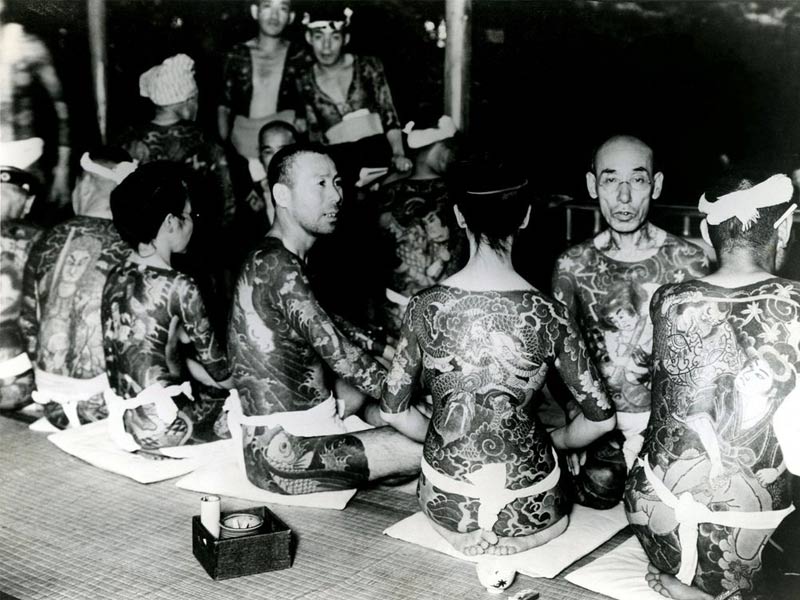
According to police estimates, gang membership peaked at over 184,000 in the early 1960s. However, by the early twenty-first century, their membership had shrunk to around 80,000, divided nearly evenly between ordinary members and associates.
Members are organized into hundreds of gangs, most of which are linked with around 20 conglomerate gangs. The Yamaguchi-Gumi is the greatest conglomerate, formed about 1915 by Yamaguchi Harukichi but completely developed and expanded only after World War II by Taoka Kazuo.
The yakuza hierarchy is evocative of a family, similar to that of the Italian Mafia. The head of any yakuza gang or conglomerate is referred to as the oyabun (“boss”; literally “parent status”), while the followers are referred to as kobun (“protégés” or “apprentices”; literally “child status”).
The strict hierarchy and discipline are generally accompanied by a right-wing ultranationalistic philosophy. Kobun customarily swears a blood pledge of loyalty. A member who violates the yakuza code must demonstrate penance—historically, by cutting off his little finger with a sword and presenting it to his oyabun, but this practice has diminished over time.
Despite their illegal actions, the yakuza pride themselves on being a Ninky Dantai (literally “chivalrous organization”). While their tactics are frequently dubious, they have been known to conduct charitable actions, such as giving and transporting supplies to earthquake victims after the 1995 Kobe earthquake and the 2011 earthquake and tsunami. Over time, the Yakuza evolved toward white-collar crime, relying more on bribery than violence. By the early twenty-first century, they were one of the world’s least violent criminal organizations.

These activities complicate the relationship between the Yakuza and the authorities in Japan; yakuza membership is not illegal, and yakuza-owned companies and gang offices are frequently openly identified. Gang whereabouts and activities are routinely known to Japanese police without the latter’s taking any action. Members have also been called upon to fulfill official tasks, such as when a yakuza force was created to act as a security force during US President Dwight Eisenhower’s visit to Japan in 1960.
Also read, Mentally disturbing and Harrowing, Japanese Horror Movies
Yakuza are seen as a necessary evil by some Japanese due to their chivalrous exterior. The organizational structure of their criminality is sometimes viewed as a deterrent to reckless individual street crime. The Japanese police agency instated the name bryokudan in an anti-gang law in the 1990s to reinforce the violent nature of yakuza organizations, in part because of their dual nature with police—as both criminals and sometimes humanitarians—and the glorification of criminal groups as “underdogs” in popular media.
Following that, the Japanese government proceeded to enforce tougher regulations against criminal organizations well into the twenty-first century.
Yakuza Groups
Police have identified twenty-four groups as crime syndicates. They earn around $45 billion in annual revenue.
- Yamaguchi-gumi,
- Sumiyoshi-kai.
- Inagawa-kai
They have around 61,100 members, accounting for 73 percent of Japan’s gangster population.
Yamaguchi-Gumi
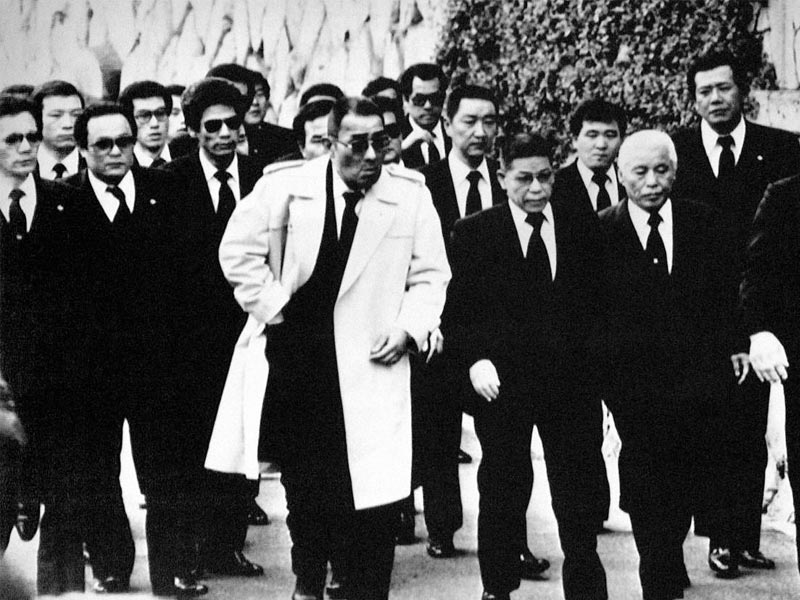
The Yamaguchi-Gumi gang, located in Kobe, is the world’s largest single criminal organization. According to police estimates, it had around 39,700 members and associate members by the end of 2006 (46 percent of Japan’s gangster population).
The Yamaguchi-Gumi group’s headquarters are in Nada Ward, Kobe. Approximately 90 affiliate gang bosses report directly to the gang headquarters in Kobe.
Yamaguchi-Gumi is a vast organization composed of 85 gangs spread over Japan with a history of “drug trafficking, human trafficking, extortion, prostitution, fraud, and money laundering.” It is three times the size of the next largest syndicate. According to some estimates, the Yamaguchi-Gumi, founded in 1915, has more than 55,000 members organized into 850 clans.
Yamaguchi-Gumi, the sixth president, took over in the summer of 2005, succeeding Shinoda. Yamaguchi-Gumi is most known for his work in the Kansai region, which encompasses Osaka, Kobe, and Kyoto. The syndicate has been attempting to expand its influence in Tokyo, has become even more antagonistic to authorities, and has been wary of knowledge about its operations leaking to outsiders.
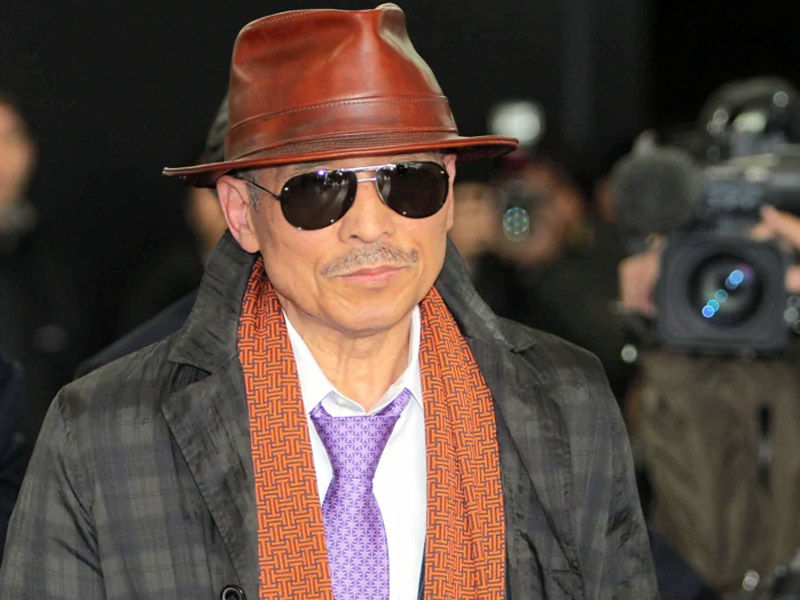
Kenichi Shinoda, also known as Shinobu Tsukasa, is the current leader of the Yamaguchi Gumi. Shinoda, being the leader of the greatest syndicate, could possibly be considered the most powerful oyabun.
Kudo Kai

Kodo-kai and its affiliates have around 4,000 members in Nagoya. Kenichi Shinoda, the leader of Yamaguchi-Gumi, got his start with this gang.
Kodo-kai has demonstrated that it is not afraid to face authorities or go after regular individuals. It has snooped on police officers’ cars and houses. It has also targeted members of the public. In October 2007, a gang member attacked a citizens’ group in Kagoshima that was attempting to push the Yakuza out of the region.
Kodai-kai is well-known for having a plethora of revenue streams. Its financial clout provides it a financial advantage over other Yamaguchi-affiliated gangs. Sumiyoshi-kai, Tokyo’s greatest crime organization, operates out of Kabuki-Cho in Minato Ward, a district known for its massage parlors. Inagawa is another big group headquartered in Tokyo’s Manato district.
Kodama the Yakuza Godfather
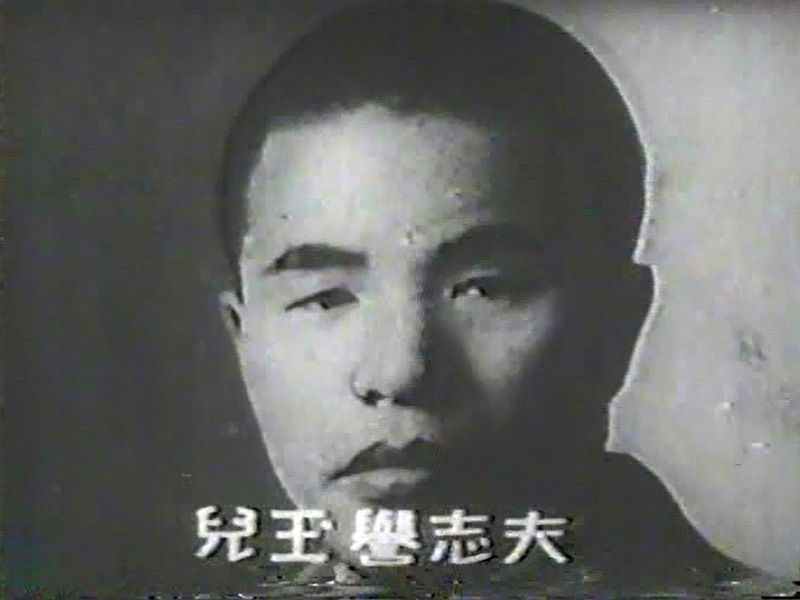
Yoshio Kodama, the Yakuza’s first 20th-century godfather, was the man who brought peace to the warring factions and unified the Yakuza. Kodama’s talent was his ability to maintain his loyalties to both right-wing political parties and criminal gangs in control, utilizing one to keep the other in check. He was a political fixer who served his government through corruption, espionage, and other shady activities known as Kuroi Kiri in Japan (black mist).
Throughout the 1930s and 1940s, he maintained a large network of spies in China who sent intelligence to the Japanese government.
Kodama utilized the Yakuza to put a stop to any Communist endeavor. In 1949, Kodama directed the Meiraki-Gumi, a criminal organization, to disrupt a labor movement at the Hokutan Coal Mine. Kodama, an ardent patriot, utilized his clout to believe that the Japanese empire’s dignity and grandeur may be restored one day.
Kodama was a key figure in the infamous Lockheed affair, which broke in 1976 when it was found that the aviation manufacturer had paid the godfather more than $2 million to sway the Japanese market away from McDonnell-Douglas and Boeing and toward Lockheed.
What exactly is a Yakuza tattoo?
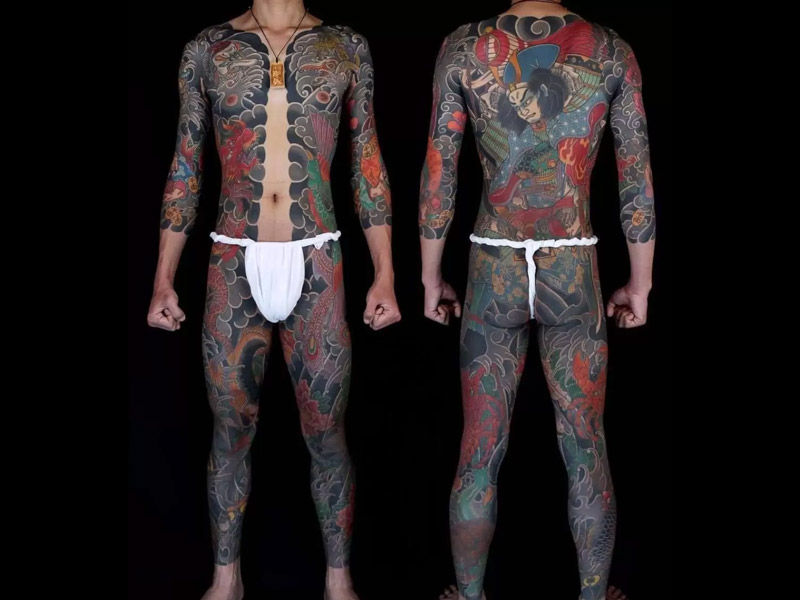
The tattoos of the Yakuza are important to the individual and what they wish to display to the world. For example, samurai Yakuza tattoos are popular because they demonstrate that the wearer is a warrior who does not allow fear to overwhelm them and makes honorable judgments.
Yakuza tattoos might be brightly colored or have intricate black outlines. A Yakuza bodysuit covers the full body from the shoulders to the legs. These Japanese tattoos, which are based on Japanese mythology and the history of the Yakuza, reveal a people’s identity to the rest of the world.
The Yakuza’s tattoos are inspired by a variety of sources. Woodblock prints from hundreds of years ago are sources of inspiration since they were always utilized as the foundation of inspiration for huge and vivid tattoos.
Back in the day, the tattoo artist was frequently the woodblock artist. They utilized the same principles: the artist would carve and gouge designs into the client’s flesh using Nara ink. When oxidized under the skin, Nara ink develops a blue-green hue. Furthermore, the narrative Suikoden, a tale about strong men and courage, was utilized as the inspiration for Yakuza tattoos with dragons, tigers, and flowers.


